por Kasandra Richardson
Growing up in an Indiana city near many industrial pollution sources, I did not have much access to nature. However, when family moved to a nearby town that headquarters the Indiana Dunes National Park, I quickly benefited from experiences with the outdoors and environmental education. These experiences influenced my own education and career trajectory in the conservation field. The towns are only 25 miles away, but demographics and experiences in the outdoors vary greatly.

As a kid, my outdoor experiences were connected to family and food. Whether we were in south Texas or northern Indiana, I understood that being outdoors allowed us to connect in a way that not only strengthened our families, but our cultural expression as well. I innately understood the vastness of ecology just by noticing the differences between the sandy soil and cacti at my Grandpa’s house in south Texas and the lushness at my Aunt’s pond in northern Indiana. I was able to build on this understanding when I began participating in a program at my high school where we went camping and hiking in National Parks as part of a summer history course. Exposure to this type of outdoor recreation was so transformative in my formation of identity – it started me on a path of seeing the outdoors as somewhere I belong.
“I’ve since gone on to earn two degrees and work a variety of jobs in the conservation field, and most of these spaces are predominately white. Existing in these spaces leads me to appreciate what’s missing from the conversation about conservation and outdoor recreation and how these practices show up in LatinX culture even more”.
I used to think “how lucky they are” about people whose families grew up camping and doing the kinds of outdoor activities that we see in outdoor magazines. But this time around, at our most recent “Mendoza Family Reunion,” I had the language to describe the land around me in ecological terms. It was then that I realized how lucky I am to have understood the vastness of ecology and biodiversity before I knew the buzzwords of the conservation field.

How I experience nature now is regularly day-hikes, gardening and at least once a year I value spending a few nights camping and exploring a new place alone. These experiences help me keep myself physically and mentally healthy, I struggle with depression and anxiety and being able to put feet to dirt is incredibly helpful for me. Mental illness is at the same time prevalent and stigmatized in the LatinX community. My small way of fighting that stigma is sharing how nature helps me cope with my younger cousins and taking them on hikes when they visit Indiana. By doing this, I’m also able to share the knowledge I’ve built around the ecological world and outdoor recreation to help foster their relationships with nature that can offer them solace in the future. This is why we need more representation in the conservation field, so that people can share these experiences in authentic and meaningful ways and engage their loved ones in new outdoor activities.
“Today, as we spend more time indoors than ever, I’ve found new ways to connect with nature. Planting pollinator gardens for my family and friends has been a welcome outlet for me during the pandemic. Furthermore, witnessing Monarch’s frequent the garden in my family’s yard is a powerful way to connect with my Mexican heritage. The first Monarch that visited after the milkweed flowered, I’m sure was my grandma visiting”.

I’ve also started going outdoors with friends more often, as I usually hike by myself, as a way to connect while staying safe. On my most recent meetup, I pointed out the prickly pear growing at the Indiana Dunes to my friend who’s also a Mexican-American living in the Midwest. The joy on her face was palpable, she snapped a picture for her family and I realized the symbolism of how nopal can exist in the Great Lakes, Mexico and the American Southwest was important to more than just me. Familiarity can be so transformative to how people experience nature, whether it’s a familiar plant or butterfly, a family member or friend, or even an affinity group, these connections can help up bring others outdoors in new ways while recognizing our traditional ways of showing up outdoors as equally valid and important. Affinity spaces and groups are what allow me to continue to work in conservation and participate in outdoor recreation, to survive in these predominantly white geographies and workplaces. They offer a space to heal that is necessary to continue to thrive and build networks where the future looks different than our current reality.
Today, Latino Outdoors means many things to me. It’s the joy on my friend’s face when she saw the nopal hiding in the sand. It’s bringing my cousins to my favorite trail as a little break from our loud (and lovable) family. It’s gardening to support pollinators. It’s family reunions with matching t-shirts in a field in South Texas. It’s visiting National Parks. It’s sitting in the yard.


3 comment on “Growing up in an Indiana City”